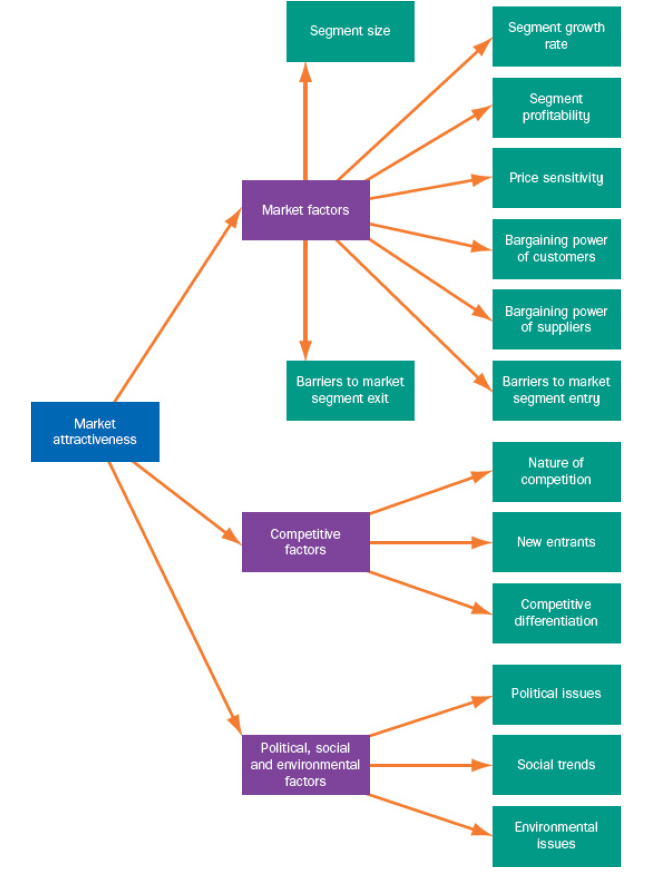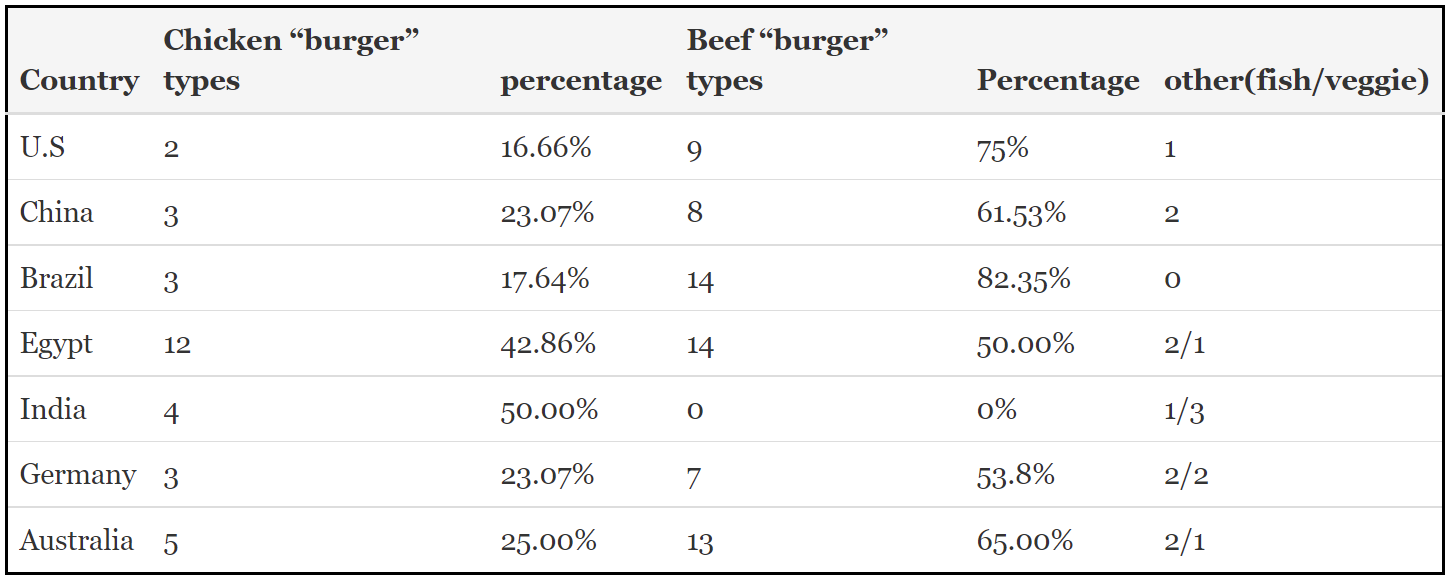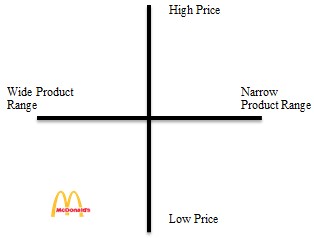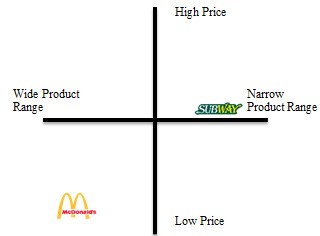Introduction
Segmentation, targeting, and positioning (STP) constitute a marketing framework, which identifies the needs of the customer and uses this information to adjust the production and services of the organization. This concept is widely used both within the commercial and academic communities with the objective to divide the market into segments and maximize the efficiency of the marketing strategies. In other words, STP comprises three consequent steps that assist the experts in understanding and satisfying the needs of the customers (Dolnicar, 2018). The current paper thoroughly analyzes the segmentation, targeting, and positioning framework and illustrates its underlying principles on the example of the fast-food and telecommunication industries.
Segmentation, Targeting, and Positioning
In general, segmentation, targeting, and positioning constitute a broad framework of marketing perspectives; therefore, it is essential to thoroughly analyze each of the three processes. The factors are commonly considered as sequential and interrelated steps to split the market into various groups and take a favorable position in the industry (Dolnicar, 2018). Most experts identify a better understanding of the market, tailored marketing mix, differentiation, and opportunities and threats analysis as the primary advantages of STP (Jobber and Ellis-Chadwick, 2020). As a result, a comprehensive STP approach might significantly increase the organization’s chances of success in the market.
Segmentation
Segmentation is the initial step of the STP framework and is responsible for collecting the data and utilizing it to divide the customers into separate segments. Jobber and Ellis-Chadwick (2020) provide the following definition of market segmentation, ‘the identification of individuals or organizations with similar characteristics that have significant implications for the determination of marketing strategy’. Consequently, Dolnicar (2018) highlights such processes as the determination of the ideal market segment, data collection, information analysis, and consequent segmentation. The core idea behind the concept is to thoroughly analyze the potential customers and identify separate groups of people with various needs, behavioral patterns, demographics, and other significant factors (Liu et al., 2018). Ultimately, the experts utilize a wide range of criteria to determine the segmentation methodology.
Therefore, the first step of segmentation is to determine the most appropriate market segment. It is essential that the responsible personnel thoroughly analyze the potential customers and come to an agreement concerning the ideal segmentation scenario (Dolnicar, 2018). This hypothesis constitutes the foundation for consequent criteria selection, which are generally classified into behavioral, psychographic, and profile segmentation variables (Jobber and Ellis-Chadwick, 2020). The graphic illustration of the criteria is presented below in Figure 1:

Nevertheless, the classification might slightly vary, depending on the approach and perspectives. For instance, some experts emphasize geographic and product-related criteria as distinct instances of segmentation variables (Camilleri, 2018). Furthermore, this differentiation might be continued by classifying the criteria based on the significance to the production or services. From these considerations, segmentation methodology is highly significant, and data analysts should conduct thorough research on the preferences of the customers.
Consequently, a large variety of studies demonstrates that a comprehensive approach to segmentation significantly increases the competitive advantages of the organization. For instance, Brotspies and Weinstein (2017) prove the effectiveness of product customization as a segmentation variable and encourage organizations to invent innovative approaches to STP. As a result, in the era of digitalization, many experts search for additional computational methods to improve the segmentation methodology. Dullaghan and Rozaki (2017) propose machine learning algorithms to determine the segmentation variables in the telecommunications industry. Consequently, Ballestar (2021) suggests that the immense amount of personal information flowing through mobile applications should be the standard of data collection in marketing. Ultimately, there is a large variety of criteria and methods to determine the most appropriate and profitable segmentation methodology.
Targeting
After the initial analysis and data collection, it is possible to evaluate the selected segments and choose the most appropriate groups to focus on. In general, targeting refers to the selection of the most profitable segment for business (Jobber and Ellis-Chadwick, 2020). Jobber and Ellis-Chadwick (2020) suggest a comprehensive criteria framework to assess market attractiveness. Besides the said characteristics, they also examine competitive and political factors to determine the most appropriate strategy. The graphic illustration of the criteria is presented below in Figure 2:

As seen from Figure 2, there is a large variety of factors that determine the targeting strategy. Most companies utilize a differentiated marketing strategy to target various segments and adjust their production and services accordingly (Camilleri, 2018). For instance, some chocolate manufacturers in India specifically target a demographic segment of adolescents by emphasizing emotional appeal and the sense of impulse (Kaul, 2019). It is an example of a deliberate targeting strategy that emphasizes one particular market based on a prior segmentation process.
Furthermore, the targeting strategy significantly depends on the type of market, which can be roughly classified by the competitive factors in Figure 2. Some experts emphasize five primary market environments, namely, emerging, fragmented, transitional, declining, and global (Nadube and Didia, 2018). For instance, emerging markets are generally associated with innovative technologies that might significantly change the previous and more outdated frameworks (Nadube and Didia, 2018). 5G is an illustrative example of technological change in an emerging market, which most telecommunication organizations attempt to succeed in (Oughton et al., 2018). Therefore, the data analysts should carefully conduct market research to mitigate any potential challenges of the targeting strategy.
From these considerations, targeting is an effective strategy to improve the business performance of the organization. While it requires thorough planning, which might be considered a weakness for inexperienced companies, it provides extensive returns in the form of profits and the general understanding of the target public. In turn, the latter can be used to better adjust products, prices, and marketing strategies. Ultimately, all steps of the STP framework are utilized to regulate the production and services to better meet the expectations of the customers, and targeting is an essential element of the STP structure.
Positioning
Positioning is the ultimate process of the STP framework that determines the overall effectiveness of marketing. In general, positioning concerns the implementation of the company’s strategy to place its products and services in the selected segment (Jobber and Ellis-Chadwick, 2020). The methods frequently include product, promotional, distribution, and price differentiation (Jobber and Ellis-Chadwick, 2020). These strategies are utilized to create a distinguished image of the brand and are central to overall organizational development (Saqib, 2021). Experts argue that the importance of positioning is similar to the core business concepts, such as the mission of the company and business planning (Urde and Koch, 2014). Therefore, it is essential to conduct a comprehensive analysis of segmentation, targeting, differential advantage, and overall features of the organization to propose a positioning strategy.
There is a large number of external strategies to help companies with the positioning framework. For instance, Jobber and Ellis-Chadwick (2020) emphasize perceptual maps and spidergram analyses as instruments to understand the customers’ preferences. The visual representation of the two frameworks is presented below in Figures 3 and 4:


Consequently, it is essential to monitor the market segment to determine the presence of any potential changes. In turn, if changes occur, it is possible to implement a repositioning strategy to adjust to the new preferences of the customers (Dolnicar, 2018). The continuous change in the market and emerging trends constitute the major difficulty for appropriate positioning implementation (Saqib, 2021). From these considerations, a productive approach requires comprehensive planning, observation, and adjustment of the positioning strategy, which might be considered a weakness and a challenge for inexperienced organizations (Saqib, 2021). However, the experts also underline the positive impact of positioning on business performance since it is the major factor that allows differentiating the company in the market (Saqib, 2021). Overall, following the STP strategy, it is possible to establish an effective marketing mix and achieve an advantageous position in the market.
Implementation Issues
Nevertheless, regardless of the STP approach, there are certain barriers to implementation. Dibb and Simkin (2009) identify a shortage of data, untrained personnel, unwillingness to change, operational problems, and inappropriate objectives as some of the core challenges of the STP framework. From these considerations, the authors propose a certain set of obligatory rules, such as learning the history of competitors, coverage decisions, road mapping the project, and selection of suitable analysts, to succeed in STP management (Dibb and Simkin, 2009). Ultimately, STP is a complex process, and the organization needs to be prepared before implementing the framework.
Industry Application
Having analyzed the primary principles of the STP framework, it is essential to examine the real-world scenarios and discuss the contemporary marketing approaches. The current paper addresses the marketing strategies of two companies in the fast-food and telecommunications industries. The case studies based on real organizations allow demonstrating the underlying principles of STP, and how they can be used for effective marketing mix and attracting new customers.
Fast-food Industry
The fast-food industry or Quick Service Restaurants (QSR) has a unique perspective on the STP framework, specifically, due to the vast emphasis on targeting. While the demographic segment in fast food depends significantly on the country and cultural habits, the organizations in this industry generally target young people and workers with little spare time (Maze, 2018). For instance, while the American and Japanese food cultures have different perspectives on QSR, the companies target similar audiences. Nevertheless, various fast-food corporations choose diverse STP approaches, which are demonstrated below in the examples of McDonald’s and Subway.
Company 1 – McDonald’s
McDonald’s is one of the most profitable and well-known organizations operating in the fast-food industry. It is frequently praised for the strategical marketing approach with an emphasis on geographic and demographic segmentation. The organization is so prominent that the phenomenon of fast-food globalization is frequently referred to as McDonaldization (Fast food vs world heritage, 2019). The success of the company might be explained by the comprehensive STP approach.
McDonald’s is an international conglomeration, which operates in most countries of the world. From these considerations, it is essential to elaborate on the geographic, demographic, and behavioral segments (An, 2020). Concerning the former, McDonald’s thoroughly prepares the menus according to the cultural norms in the country: for instance, the organization prohibits beef burgers in India due to the sacred beliefs of the animal (An, 2020). McDonald’s also adds various recipes based on geographic segmentation: for example, the teriyaki menu is exclusive to Japan (McGee, 2021). The distribution of burgers in various countries is presented in Figure 5 below:

Consequently, McDonald’s positions itself as a low-cost but high-quality fast-food chain that provides services to all demographic groups. As a result, it appeals to low or middle income customers, who are frequently students (An, 2020). Combined with the rich menu based on cultural aspects, McDonald’s focuses on the wide product range and low price positioning. The approximate perceptual map of McDonald’s positioning can be seen in Figure 6 below:

The selected marketing approach has allowed McDonald’s to establish its global presence and appeal to the target audience with low or middle income.
Company 2 – Subway
The second analyzed company – Subway – is generally recognized as one of the most prominent competitors to McDonald’s in the industry. Furthermore, while the profits of the company are inferior to the McDonald’s chain, Subway held the largest number of restaurants globally until recently (Shedd, 2018). Concerning the STP approach, Subway focuses on healthier food options, which creates a distinct position in the industry (Marketing Two Cents, 2021). As a result, it appeals to people leading a healthy lifestyle but retains all the benefits associated with the industry, such as relatively low prices and various demographic groups.
Ultimately, compared to McDonald’s, Subway presents a narrower product range associated with higher prices; however, it emphasizes the quality of its sandwiches and provides a large number of healthy and low-calorie options. The differences between the two restaurants are presented in the perceptual map in Figure 7:

As a result, both McDonald’s and Subway were able to achieve the highest positions in the industry by applying the principles of the STP framework to practice.
Telecommunications Industry
Unlike the fast-food industry, telecommunications play a vital role in the daily lives of most people in developed countries and, specifically, in the UK. Mobile communications and the internet networks, such as LTE and 5G, are present in all areas of life, which explains the competitive density of the industry (Namvar et al., 2017). Therefore, the companies need to apply the STP approach and create a differential advantage to achieve a favorable position in the market.
Company 1 – Vodafone
Vodafone is one of the most prominent international providers of telecommunication services, which is also highly active in the UK. Concerning STP, the organization primarily operates in the segment of high-income customers who require fast and reliable internet (Kalam, 2020). Furthermore, the company is widely known for technological progress and 5G implementation in various countries (Kalam, 2020). The chosen approach attracts a large number of entrepreneurs and digitalization enthusiasts (Kalam, 2020). The positioning strategy of the company is presented below in Figure 8:

Ultimately, the company has conducted thorough research to determine the most profitable segments and chosen the marketing strategy accordingly.
Company 2 – BT Group
Unlike Vodafone, BT operates primarily in the United Kingdom and focuses on the customers’ experience. The organization acknowledges that the values of the clients should be prioritized and chooses the STP strategy accordingly. The company can provide up to 99% of the UK population with reliable mobile network connection regardless of the place and accessibility (BT, 2021). According to the annual report (2021), the mission of the company revolves around the customers and their preferences, which differentiates the organization from Vodafone. Consequently, BT invests large funding into the environmental aspect of sustainability, and this approach is widely supported by ecologically conscious customers (BT, 2021). The comparison perceptual map of positioning between Vodafone and BT is presented below in Figure 9:

As seen from the chart, the two organizations close different gaps in the market, which can explain the continuous development of both companies.
Recommendations
The STP framework analysis and a thorough inspection of real-world scenarios in two industries allow determining some of the generic management recommendations. First, it is essential to emphasize the segmentation process to maximize the effectiveness and flexibility of the marketing strategy. Data collection and analysis are two highly significant processes, and any potential mistakes during this phase will have negative consequences on targeting and positioning. Management and data analysts need to take behavioral, psychographic, and profile criteria into account to create the ideal market segment outline. Secondly, it is advisable to take cultural norms into consideration for international corporations. The McDonald’s example, such as unique burgers in Japanese McDonald’s, transparently demonstrates that the menu adjustment based on geographic and cultural segmentation is a highly profitable strategy. Ultimately, following the basic standards of the STP framework, it is possible to determine the most profitable segments in the market and implement a favorable positioning strategy.
Reference List
An, J. (2020). ‘Analysis on marketing segmentation of McDonald’s’, The 4th International Conference on E-Business and Internet (ICEBI 2020). Singapore.
Ballestar, M. T. (2021). ‘Segmenting the future of e-commerce, one step at a time’, Journal of Theoretical and Applied Electronic Commerce Research, 16(2).
Brotspies, H., and Weinstein, A. (2019). ‘Rethinking business segmentation: A conceptual model and strategic insights’, Journal of strategic marketing, 27(2), pp. 164-176.
BT. (2021). BT Group Plc Annual Report 2021.
Camilleri, M. A. (2018). ‘Market segmentation, targeting and positioning’ in Tourism Economics and the Airline Product, (pp.69-83). Springer, Switzerland.
Dibb, S., and Simkin, L. (2009). ‘Implementation rules to bridge the theory/practice divide in market segmentation’, Journal of Marketing Management, 25(3), pp. 375-396.
Dolnicar, S. (2018). ‘Understanding and satisfying consumer needs: Segmentation, targeting and positioning’ in Cooper. C. et al. (eds.) The SAGE Handbook of Tourism Management: Applications of Theories and Concepts of Tourism. SAGE.
Dullaghan, C., and Rozaki, E. (2017). ‘Integration of machine learning techniques to evaluate dynamic customer segmentation analysis for mobile customers’, arXiv preprint arXiv:1702.02215.
Fast food vs world heritage: Why the golden arches won’t devour washoku. (2019).
Jobber, D. and Ellis-Chadwick, F. (2020) Principles and practice of marketing (9th ed). Maidenhead, McGraw Hill.
Kaul, D. (2019). ‘Segmenting and targeting in Indian Market’, International Journal of Management, 8(1), pp. 121-125.
Liu, J. et al. (2018). ‘Market segmentation: A multiple criteria approach combining preference analysis and segmentation decision’, Omega, pp. 1-30.
Marketing Two Cents. (2021). Subway and brand communication.
Maze. J. (2018). Here’s who eats fast food, according to the CDC. Web.
McGee, O. (2021). McDonald’s Japan add five teriyaki items to the menu, including fries and a spicy new burger.
Nadube, P. M., and Didia, J. U. D. (2018). ‘Market targeting and strategic positioning’, International Journal of Marketing Research and Management, 8(1), pp. 32-45.
Oughton, E. et al. (2018). ‘Towards 5G: Scenario-based assessment of the future supply and demand for mobile telecommunications infrastructure’, Technological Forecasting and Social Change, 133, pp. 141-155.
Saqib, N. (2021). ‘Positioning – A literature review’, PSU Research Review, 5(2), pp. 141-169.
Shedd, K. (2018). The most franchised company in the world isn’t McDonald’s or Starbucks.
Urde, M., and Koch, C. (2014). ‘Market and brand-oriented schools of positioning’, Journal of Product & Brand Management, 23(7), pp. 478-490.